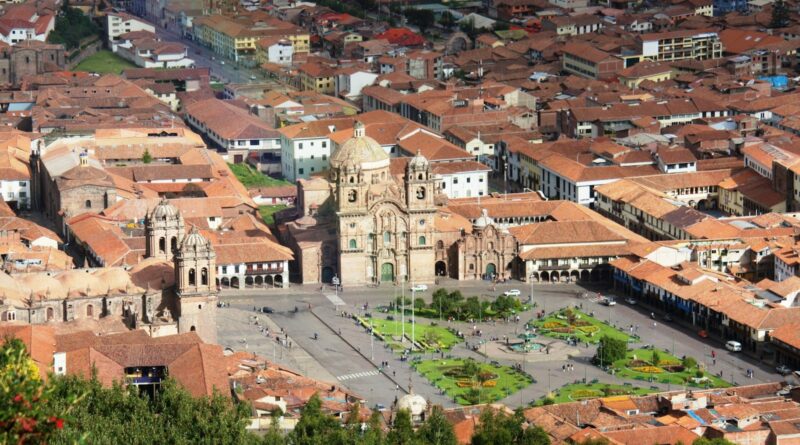Why Cusco Is the Gateway to Machu Picchu
Why Cusco Is the Gateway to Machu Picchu
Cusco is the gateway to Machu Picchu, welcoming global travelers eager to discover the wonders of the ancient Inca civilization. Nestled high in the Peruvian Andes, this lively city offers far more than just a stopover before taking the train to one of the world’s most famous archaeological sites. As both a living cultural hub and an essential acclimatization point, Cusco turns a trip to Machu Picchu into a richly layered journey. Here’s why every adventure to the lost city of the Incas inevitably begins with this remarkable city.
The Historical Heart of the Inca Empire
Long before it became a thriving tourist center, Cusco was the beating heart of the Inca Empire. Believed to be designed in the shape of a puma by the Incas, the city was their religious, administrative, and military capital. Walking through Cusco’s narrow, cobbled streets, you’ll see vestiges of the empire’s prowess: seamless stone walls, impressive plazas, and the remnants of grand palaces. The city’s unique blend of Inca and colonial Spanish architecture makes it a fascinating destination in its own right.
Cusco’s Strategic Location
One of the main reasons why Cusco is the perfect base for visiting Machu Picchu is its strategic location. The city sits at 3,399 meters (11,152 feet) above sea level, an ideal spot for acclimating to the altitude of the Andes before venturing higher. Most Machu Picchu tours, whether by train, trek, or bus, depart from here. Travelers can choose from the classic Inca Trail, the scenic Salkantay Trek, or the popular train journey to Aguas Calientes, all of which begin in or near the city.
Cultural Experiences in Cusco
Beyond logistics, Cusco stands out for its vibrant cultural scene. The city hosts lively markets, colorful festivals, and an array of museums that shine a light on Peru’s fascinating history. Plaza de Armas, Cusco’s main square, is the epicenter of local life, surrounded by grand churches and bustling cafes. The San Pedro Market is another must-visit, where you can sample Peruvian street food or browse local crafts.
Focus Keyword Subheading: Exploring Cusco — The Gateway to Machu Picchu
Travelers often underestimate how much time they’ll want to spend in Cusco before heading to Machu Picchu. Each street is imbued with stories; each corner reveals exquisite stonework from centuries past. Some highlights include:
– Sacsayhuamán: This ancient fortress offers panoramic views over the city.
– Qorikancha: Once the most important temple in the Inca empire, now part of the Santo Domingo Convent.
– San Blas Neighborhood: The city’s bohemian district, known for its art studios and lively nightlife.
Cusco is not merely a gateway in the literal sense—its complex history, welcoming atmosphere, and vibrant community enrich your entire journey.
Preparing for Machu Picchu: Acclimatization and Beyond
Altitude sickness is a real concern for travelers visiting the Andes. Spending at least two days in Cusco helps your body adjust to the elevation, significantly reducing the risk of headaches, dizziness, or fatigue when you finally visit Machu Picchu. During this acclimation period, you can take gentle city strolls, enjoy local cuisine such as alpaca steaks and quinoa soup, and sip coca tea—a traditional remedy for altitude adjustment.
Nearby Wonders: The Sacred Valley
Cusco also grants easy access to the Sacred Valley, a breathtaking region filled with terraced hillsides, ancient ruins, and traditional Andean villages. Towns like Pisac and Ollantaytambo are well worth visiting for their markets, archaeological sites, and picturesque landscapes. Many choose to explore the Sacred Valley as a day trip, but staying overnight in these smaller towns is an excellent way to experience authentic Andean culture.
Modern Comforts for Every Traveler
As a major tourist hub, Cusco caters to all budgets and tastes. You’ll find luxurious hotels in historic mansions, cozy hostels with mountain views, and a diverse culinary scene ranging from Peruvian classics to international fare. Several reputable tour operators and travel agencies are on hand to help arrange everything from Machu Picchu tickets to guided treks, making logistics easy for visitors.
Getting to Cusco: The Gateway Experience
Reaching Cusco is simple, thanks to its well-connected airport, Alejandro Velasco Astete International Airport, which receives regular flights from Lima and several international destinations. From Cusco, you can conveniently access a range of transport options to complete your journey to Machu Picchu, whether via bus, train, or multi-day trek.
The Lasting Magic of Cusco
Spending time in Cusco is about much more than practical preparation—it’s about connecting with a place where past and present blend seamlessly. The city’s magic lies in its authenticity; despite being a busy tourist hub, it remains a living testament to centuries of cultural evolution. By the time travelers board the train or set off on the trail to Machu Picchu, they carry with them not just anticipation, but a profound appreciation for the region’s history and vibrant spirit.
—
FAQ
1. How many days should I spend in Cusco before visiting Machu Picchu?
It’s recommended to stay at least two days in Cusco to acclimate to the altitude. This also gives you time to explore the city and nearby attractions.
2. What is the altitude of Cusco, and why is acclimatization important?
Cusco sits at about 3,399 meters (11,152 feet) above sea level. Allowing your body time to adjust helps prevent altitude sickness when traveling to higher elevations like Machu Picchu.
3. What are the best ways to travel from Cusco to Machu Picchu?
The most popular methods include taking a train to Aguas Calientes, trekking the Inca Trail, or opting for alternative treks like Salkantay or Lares.
4. Which local attractions should I see in Cusco before heading to Machu Picchu?
Don’t miss Sacsayhuamán, the Qorikancha temple, and the San Pedro Market. The Plaza de Armas and the San Blas neighborhood are also highlights.
5. When is the best time to visit Cusco for a trip to Machu Picchu?
The dry season, between May and September, is generally considered the best time to visit for clear weather and optimal trekking conditions.
6. Are there guided tours available in Cusco?
Yes, many agencies in Cusco offer guided tours of the city, the Sacred Valley, and Machu Picchu itself.
7. Can I store luggage in Cusco while I visit Machu Picchu?
Most hotels and hostels in Cusco offer luggage storage for guests heading to Machu Picchu.
8. Is Cusco a safe city for tourists?
Cusco is generally safe, but it’s wise to take standard precautions such as keeping valuables secure and being aware of your surroundings, especially in crowded areas.


